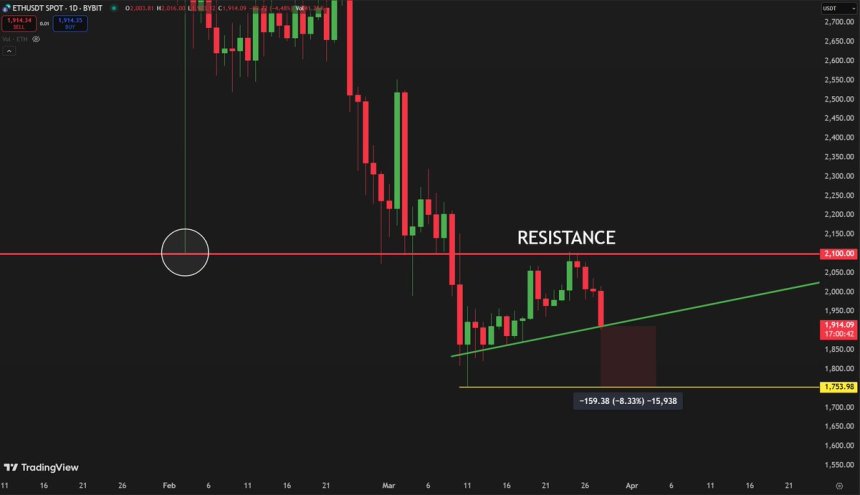Timeline: Jelly token goes sour after $6M exploit on Hyperliquid
Suspicious trading activity led decentralized exchange Hyperliquid to delist the Jelly-my-Jelly (JELLY) memecoin, with details of an exploit unraveling over the course of a few days. The decentralized finance sector has already seen historic exploits in 2025, as the space struggles with issues of oversight and security. The Bybit hack saw North Korean hackers get away with $1.4 billion in February alone.The JELLY incident, in which a whale exploited the Hyperliquid exchange’s liquidation parameters, getting away with millions, is just the latest exploit to rock the industry. Observers roundly criticized Hyperliquid’s reaction to the short squeeze, with one even comparing it to the ill-fated FTX. Here’s a look at how the incident unfolded.Jelly token price crashes ahead of Hyperliquid exploitVenmo co-founder Iqram Magdon-Ismail launched the JELLY token as part of the JellyJelly Web3 social media project. Following the launch on Jan. 30, the token price crashed from $0.21 to just $0.01 some 10 days later. Jelly-my-Jelly token price lost most of its value in the first two weeks of trading. Source: CoinMarketCapWhile the coin’s market cap initially boasted almost a quarter of a billion dollars, by March 26 it had a market cap of roughly $25 million.A short squeeze of JellyJellyThe short squeeze on the JellyJelly token took place over the course of just a few hours on March 26. According to a postmortem by Arkham Intelligence, this is how it went down:The exploiter deposited $7 million on three separate Hyperliquid accounts, making leveraged trades on the illiquid Jelly token.Two accounts took $2.15 million and $1.9 million long positions on JELLY, while the other took a $4.1 million short position to cancel the others out.As the price of JELLYJELLY increased, the short position was liquidated, but it was too large to be liquidated normally.The short position was passed to the Hyperliquidity Provider Vault (HLP).The exploiter meanwhile had a seven-figure PnL from which to withdraw. By this point, the price of JELLY had pumped 400%.The exploiter began to pull withdrawals but Hyperliquid soon restricted their accounts. Instead of attempting further withdrawals, they began to sell their JELLY position.Hyperliquid shuts down Jelly marketAs the trader began to sell their remaining Jelly position, Hyperliquid shut down the market for the token. According to Arkham, the exchange closed the market with Jelly at $0.0095, the price at which the third account had entered its short trades. Hyperliquid announced on X that it would delist perpetual futures trading for the JELLY token, citing “evidence of suspicious market activity.”Related: Long and short positions in crypto, explainedThe exchange said, “All users apart from flagged addresses will be made whole from the Hyper Foundation. This will be done automatically in the coming days based on onchain data.” It further acknowledged the hit the HLP took when saddled with the long positions but said that the HLP’s positive net income was $700,000 over the last 24 hours: “Technical improvements will be made, and the network will grow stronger as a result of lessons learned.”Crypto observers criticize Hyperliquid Some market observers weren’t very impressed with how Hyperliquid handled the situation. The CEO of Bitget, Gracy Chen, wrote, “The way it handled the $JELLY incident was immature, unethical, and unprofessional, triggering user losses and casting serious doubts over its integrity.”She said that the exchange “may be on track to become FTX 2.0” and that the decision to close the Jelly market and settle positions at a favorable price “sets a dangerous precedent.” Alvin Kan, chief operating officer at Bitget Wallet, told Cointelegraph that the Jelly meltdown was just another example of how capricious hype-based price action can be. “The JELLY incident is a clear reminder that hype without fundamentals doesn’t last […] In DeFi, momentum can drive short-term attention, but it doesn’t build sustainable platforms,” he said. The market will continue to expose projects that are built on speculation, not utility, he concluded. Arthur Hayes, the founder of BitMEX, seemed to imply that reactions to the Jelly incident were overblown, writing on X, “Let’s stop pretending hyperliquid is decentralised. And then stop pretending traders actually give a fuck.” Source: Arthur HayesThe exchange had already taken action regarding leveraged trading earlier in March, increasing margin requirements for traders after its HLP lost millions of dollars during a large Ether liquidation. Related: Hyperliquid ups margin requirements after $4 million liquidation lossStill, Hayes could be right — “degen” traders who are at peace with the risk of DeFi may just eat the losses and continue onward. Furthermore, it doesn’t appear that a clear legal framework for DeFi is coming anytime soon, at least not in the United States. There may be no pressure or oversight, other than user reactions, to make “decentralized exchanges” change their ways. The true irony of the exploit is that it seems everyone lost out — the exchange, traders, and even the exploiter.In total, the trader deposited $7.17 million into their accounts but was only able to withdraw $6.26 million, with a balance of around $900,000 still remaining on their Hyperliquid accounts. If they are able to get the funds back, the exploit will cost them around $4,000; if not, it could have cost them almost $1 million. Magazine: Arbitrum co-founder skeptical of move to based and native rollups: Steven Goldfeder






